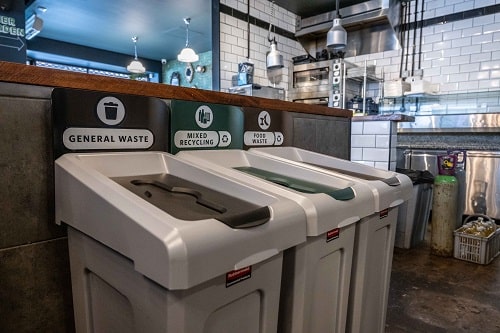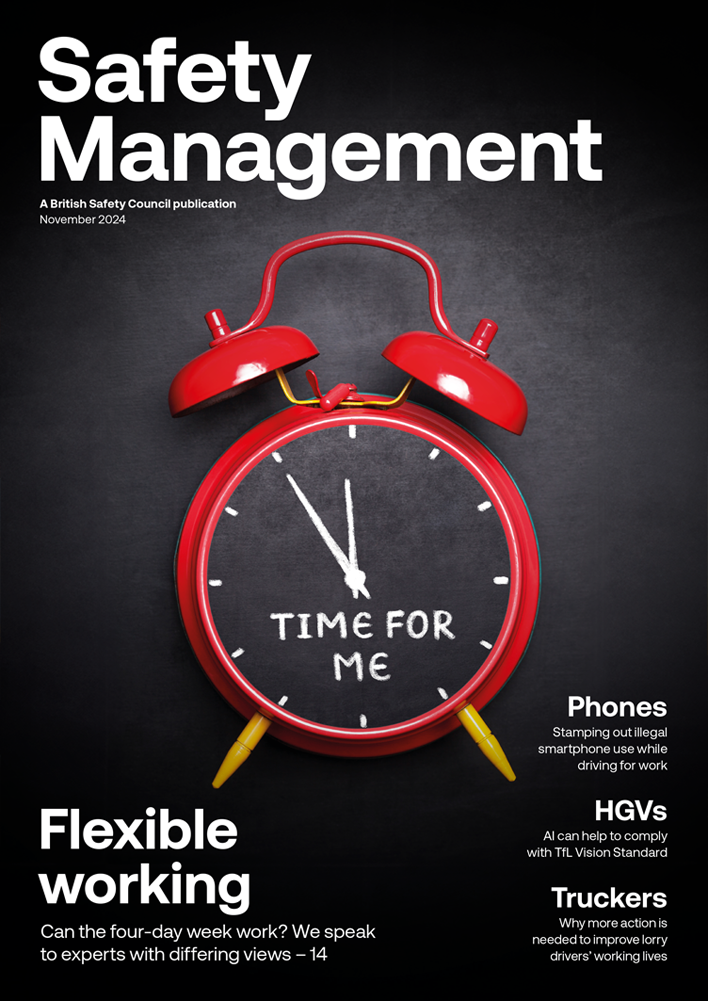Male construction workers in the UK are three times more likely to die by suicide than the national average, but creating an environment where workers feel comfortable talking about mental health and better project planning at the pre-construction stage to reduce time pressures on the workforce can help protect workers’ mental wellbeing.
Features
Righting wrongs: tackling construction’s suicide epidemic
Mental wellbeing and site safety in construction are intrinsically linked. Our industry loses 45 people a year to safety accidents, along with a harrowing 700 people a year in construction-related suicides. In the same way that we have significant precautions in place to prevent slips, trips, falls and accidents from working at height, we should be asking ourselves what can be done to protect the wellbeing of our site teams.
The harsh reality is that as a sector, we are doing something wrong when it comes to the health of our employees, as we are working in an industry where men are three times more likely to die by suicide than the national average. As owner and director of Seddon and a trustee of industry charity, Mates in Mind, a key element of my role revolves around establishing the route to reducing these devastating figures. It is my belief that only by recognising the link between mental health and safety on site, can the industry can begin to address the root causes and foster a healthier workforce.
 "We are actively trying to create a culture where it is okay not to be okay." Photograph: Seddon Construction
"We are actively trying to create a culture where it is okay not to be okay." Photograph: Seddon Construction
Tackling safety at site level
Construction sites are high-risk environments, which is why having clear and comprehensive health and safety policies and procedures in place is something that is taken seriously. However, this alone does not mitigate all risks of accidents. If a site worker is not feeling mentally well, the chances are that their ability to make safe decisions on site may be compromised. This could have a direct impact on themselves and their team, leading to life-changing and even fatal mistakes.
As simplistic as it sounds, open discussions surrounding mental health can provide a solution. Although these types of conversations used to be scarce or non-existent on construction sites, there has been a major drive to make them commonplace.
These conversations are something that Seddon has been carrying out for a number of years. In 2016, we began speaking to construction workers at length, starting with the basics – what is mental health? What signs should we be looking for? How can we spot them? Followed by information on how to signpost people to valuable and effective resources. It was our site teams who ultimately linked the topic of mental health to on-site safety.
There was an overwhelming view that if somebody is making a decision on-site and it is not a particularly safe decision, then it could impact the whole team.
We are actively trying to create a culture where it is okay not to be okay. This is the first step in the right direction and the majority of the time it does work. I recently saw this first-hand when we had a tradesperson raise a concern about someone they work with on-site, who they thought had suicidal thoughts.
While they didn’t know exactly what to do, they did know to raise it and even while the site manager wasn’t equipped to independently find a solution, they knew the correct number to call to speak to someone who did. This meant that we were able to put some interventions in place to support this person. That is a major win, achieved simply through having those open conversations at site level.
Life-saving toolbox talks
For this year’s World Suicide Awareness Day, which took place on Sunday 10 September, we launched an initiative to facilitate productive and impactful conversations around suicide. The objective was to debunk myths and misconceptions and create a better understanding of suicide, as well as to equip workers with the language needed to navigate these challenging conversations.
The initiative involved a “10@10” briefing, that would be held at site and among office teams. Prior to the briefings, managers were provided with posters that displayed QR codes, signposting employees to 24/7 suicide help and advice providers, as well as local men’s clubs.
 Nicola Hodkinson: "The more we are open and safe in our communication, the more likely it is that people can offer support or feel confident to seek help."
Nicola Hodkinson: "The more we are open and safe in our communication, the more likely it is that people can offer support or feel confident to seek help."
They were also given QR codes to access Seddon’s own mental health first aid and ASIST teams, along with access to Spectrum Life, an app which enables internal project managers to oversee wellbeing programmes, as well as providing employees with access to wellbeing support. In addition to these resources, all managers were provided with the information to guide these briefings, using facts and advice sourced from mental health experts.
The tools allowed managers to open up what may otherwise have been impossible conversations with their team, safe in the knowledge that the advice they were giving was legitimate. We know that language plays a crucial role in developing environments that eliminate stigma and facilitate open and safe conversations about suicide and how to prevent it. In a world where silence, fear of saying the wrong thing and insensitivity so often makes matters worse, the more we are open and safe in our communication, the more likely it is that people can offer support or feel confident to seek help.
Reimagining pre-construction
Changes to the industry’s approach to mental health can’t only come at site level. There is an acute need for a link to be made between the pre-construction phase and its impact on site workers further down the line. We are creating a culture of poor working environments which is outside our control as a contractor. This is something that Seddon is now working hard to draw attention to, while advocating for enhanced communication during the procurement stages.
Reducing time on-site to complete a job should not always be perceived as an achievement and rewarded so highly, as this risks people’s safety and wellbeing. A lack of communication between the design team, client and contractors in the procurement stage of a project inevitably causes issues when work begins on-site.
For example, if a job that was originally planned with 12 months on-site, experiences delays from the customer or designer into that time, there is often an expectation for the contractor to work to accommodate a much shorter time on-site. But where does that time go? The team can’t all work weekends and we can’t suddenly flood the site with hundreds of new workers. This causes the issues to build up, resulting in pressure and stress for those delivering the project on-site.
With increased anxiety and stress, workers are more likely to make mistakes on-site that could lead to potential accidents for all of the team. It is therefore vital that decision makers in the pre-construction phase recognise that the mental health of labourers on the ground is dependent on their decisions.
In order to reduce risk further down the chain, planning and working to the legal requirement of the CDM (Construction Design and Management) Regulations would significantly reduce delivery pressures. There certainly needs to be a more collaborative approach to procurement, including early contractor involvement and setting achievable outcomes. A shared understanding of the project timeframes between the customer and contractor is essential to ensure that safety is prioritised for the workforce on-site.
The quiet conversation
Pre-construction processes are beyond Seddon’s power alone to change. However, we are bringing these issues to light through many different channels. We have been in conversations with customers, frameworks and people at the front end of the construction pipelines. The aim is to work together to create a sea change to industry culture, starting from how we as an industry award contracts, making it no longer a race to the bottom.
It is these quiet conversations that will end up making the biggest impact.
Ultimately, everything goes to a point in time of handover, so anything missed in the pre-construction stages will land at the feet of the site team which can be detrimental to their mental and physical health. We know from experience that when we are brought in at the early stages of a project, allowing us to work with the client team and design team, this ends up benefiting everyone.
If processes are clearly communicated and aligned in the pre-construction stage, we can make sure the plans are robust and achievable and projects are ready, before a spade goes into the ground. Workers on-site will have enough time to complete the job safely and to a high standard.
Beyond the industry
While there is value in looking inward at our industry to identify solutions to the disproportionate rates of suicide, it is important to remember that suicide is a complex social issue and not simply one that exists in construction in isolation. Many factors interlink that lead to the horrific statistic our industry is experiencing, stemming from social, psychological, biological, chemical and cultural factors.
It is therefore important to consider the backgrounds of the construction workforce and how issues around factors such as substance abuse, relationship dynamics, housing insecurity and more, may impact the wellbeing of individuals.
It is only by understanding these external pressures that we can begin to find a holistic solution to this growing issue. This is something that businesses in the sector should be looking for external, specialist support for. While we may understand the pressures of the job and our industry, complex cultural, medical and social issues require expertise in each of those fields to achieve successful outcomes.
Finding the ‘why’
Tackling the mental health crisis in construction is all about finding the ‘why’. That’s what charities like Mates in Mind are working tirelessly to do but it will take time and effort from industry as a whole. Opening the conversation up at site level can help to address any serious concerns in the same way that having signage and training on slips, trips and falls can prevent physical accidents. But in order to address the root cause, we should be looking to find the equivalent of a hard hat to protect our site team’s mental wellbeing.
The workforce, their behaviours and the construction framework are interlinked and interdependent in their influence on mental health and suicide prevention. A major part of the solution begins with addressing the issues in the pre-construction phase and subsequently enabling our site teams to begin work with the protection of a clear and achievable timeline with the correct resources.
Finally, it is crucial to recognise the external factors that impact our workforce in their lives outside of construction. The complexity of this issue means businesses within the sector that are serious about tackling poor mental health and suicide, should invest in professional expertise in the fields of suicide prevention. This way we can work to deliver strategies to tackle these complex social problems in order to set the industry on the right track.
Nicola Hodkinson is Owner and director at Seddon
For more information see:
seddon.co.uk
@yourseddon
matesinmind.org
Follow Nicola Hodkinson:
@NicolaHodkinson
FEATURES

Winter pressures mean good mental health support is crucial
By Kevin Bampton, British Occupational Hygiene Society on 01 December 2021
I will tell anyone who cares to listen that winter 2020/2021 was a historic moment in British social and economic history. British business became, for the first time ever, my public health hero.

The big sleep
By Marcus Herbert, British Safety Council on 01 December 2021
Poor quality sleep can affect both our physical and psychological wellbeing, but simple lifestyle changes can make a big difference.

Why changes to recycling legislation in England are an opportunity, not a burden
By Adriana Olaya Rodriguez, Newell Brands on 12 November 2024
From March 2025, many businesses in England will have to begin separating their recyclable and food waste from general waste prior to collection, but the changes will bring wider business benefits, such as reduced waste disposal costs and improved sustainability credentials.



